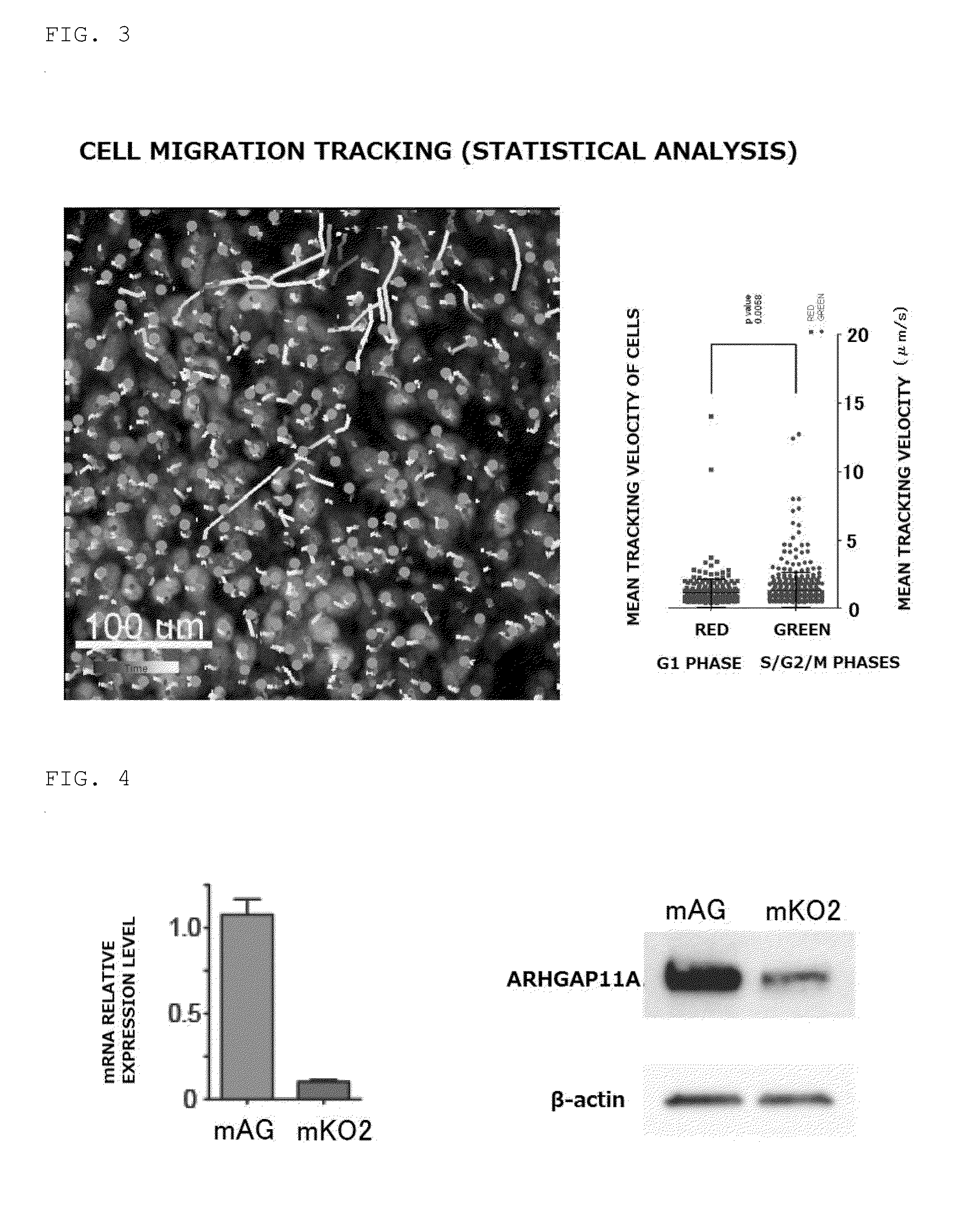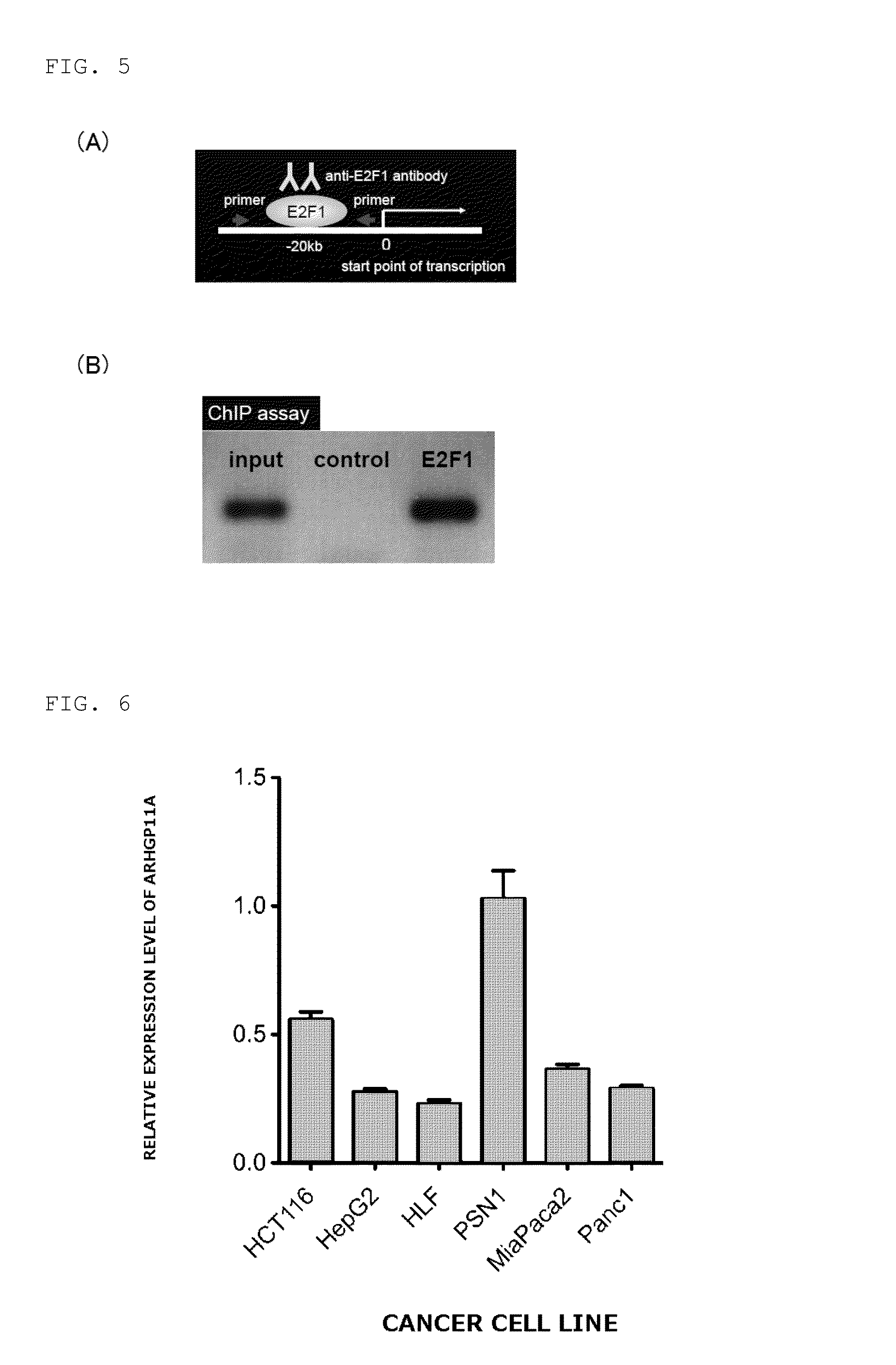Novel Antitumor Agent and Method For Screening Same
a technology of which is applied in the field of new antitumor agent and screening method, can solve the problems of cancer cells being locally confined and unable to proliferate/progress, the drug used for suppressing cancer cell invasion and/or metastasis cannot be said to be sufficient, and the patient's death, etc., to achieve/or metastasis, and suppressing cancer cell invasion
- Summary
- Abstract
- Description
- Claims
- Application Information
AI Technical Summary
Benefits of technology
Problems solved by technology
Method used
Image
Examples
reference example 1
Confirmation of Cell Cycle
[0082]First, cells of a surgically excised colorectal cancer tissue classified on the basis of the presence of Geminin (cell cycle: S / G2 / M stages) were stained by a tissue immunostaining method using an anti-Geminin (S / G2 / M) polyclonal antibody to confirm a non-cancer portion (A), a cancer cell invasion head portion (B), and a cancer central area (C). As a result, Geminin was most intensely stained at the portion (B), confirming that the cells in the S / G2 / M phases were abundantly present in the cancer cell invasion head portion (FIG. 1).
reference example 2
Analysis of Motile Cells
[0083]An intravital imaging experimental system for a cancer tissue was used to perform real-time analysis of the manner in which HCT116 (human colorectal cancer cell line) invaded a normal tissue. S / G2 / M cells and G1 cells were sorted and subjected to microarray analysis to extract cell cycle-dependent genes, and it was found for the first time that among the genes, ARHGAP11A associated with the mobility was expressed at a high level in the cells in the S / G2 / M phases.
[0084]Fluorescent probe (Fucci: fluorescent ubiquitination-based cell cycle indicator)-expressing HCT116 was implanted into the cecum or subcutaneous tissue of a NOD / SCID mouse to visualize the cell cycle progression of HCT116. Fucci caused red emission from nuclei in the G1 phase (mKO2) and green emission from nuclei in the S / G2 / M phases (mAG). Part of Cdt1 protein was used in the visualization of the G1 phase, and part of Geminin protein was used in the visualization of the S / G2 / Mphases Fucci-...
reference example 3
On Expression Control of ARHGAP11A by Cell Cycle-Dependent Transcription Factor E2F
[0086]The E2F family is known to include cell cycle-dependent transcription regulators. It was noticed that there was a sequence to which E2Fs bound at −20 to −28 b (chr15: 32907663-32907671) from the start point of transcription of ARHGAP11A (chr15: 32907691), and it was confirmed by a luciferase reporter assay (FIG. 5A) and a chromatin immunoprecipitation method (ChIP) that the expression of ARHGAP11A was controlled by the cell cycle-dependent transcription factor E2F. It was confirmed that the inhibition of the expression of ARHGAP11A reduced the migratory / invasive capacity of cancer cells, indicating that ARHGAP11A was a promising therapeutic target (FIG. 5B).
TABLE 1Rho GAPsRankGeneFC5ARHGAP11A18.8512ARHGAP11A14.9041ARHGAP11A11.0357DEPDCID9.84106IQGAP37.47
PUM
| Property | Measurement | Unit |
|---|---|---|
| temperature | aaaaa | aaaaa |
| temperature | aaaaa | aaaaa |
| temperature | aaaaa | aaaaa |
Abstract
Description
Claims
Application Information
 Login to View More
Login to View More - R&D
- Intellectual Property
- Life Sciences
- Materials
- Tech Scout
- Unparalleled Data Quality
- Higher Quality Content
- 60% Fewer Hallucinations
Browse by: Latest US Patents, China's latest patents, Technical Efficacy Thesaurus, Application Domain, Technology Topic, Popular Technical Reports.
© 2025 PatSnap. All rights reserved.Legal|Privacy policy|Modern Slavery Act Transparency Statement|Sitemap|About US| Contact US: help@patsnap.com



